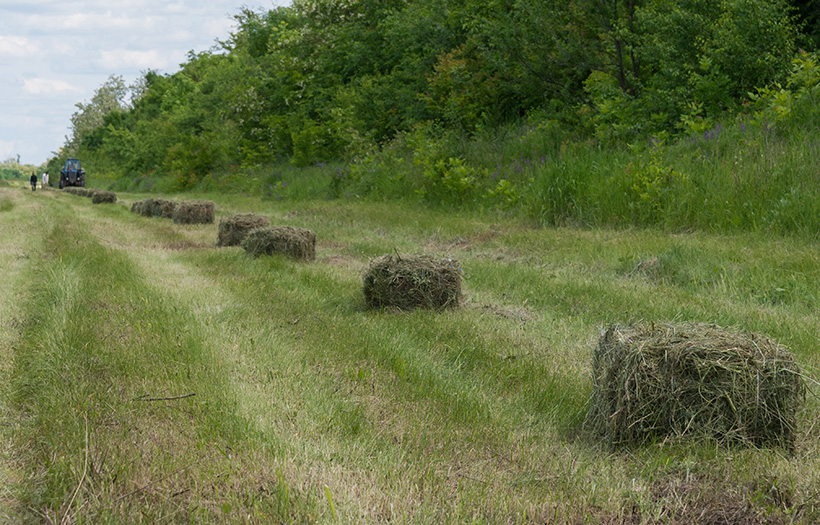Judging Hay Quality for Horses

Because hay is such a common part of a horses diet, judging quality on visual inspection is important, as lab analysis is not always easily available. Here are three simple things to look for to help you select the best hay for your horses and your money.
- The initial check that most people are familiar with is color and smell. Horse hay should be bright green and smell slightly sweet. Brown hay indicates either a problem in the baling process, such as being rained on, or age. Acrid or musty smells generally indicate the presence of mold.
- Another sign of good horse hay is the leaf:stem ratio. The more leaves, the better, since the leaves are where most of the nutrition in the hay is stored. Hay that has too many hard, woody stems is difficult to digest. Even if it cheaper, most horses will pick through and leave the bulk of the stems behind, costing more in the long run. High quality hay is fine-stemmed, pliable, and full of leaves.
- Type of hay is another factor. Grass hays, such as timothy or orchard grass, generally provide sound basic nutrition. The higher the concentration of legumes, such as alfalfa or clover, the higher the energy content. High quality alfalfa is generally better than high quality grass hay, but good quality grass hay can be better than average quality alfalfa hay.
The best thing, in the end, is to have hay tested. This is not always feasible for every load, but if your hay source is consistent from load to load, this may be a good option to get a general feel for what nutrients your hay contains.
